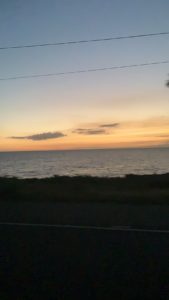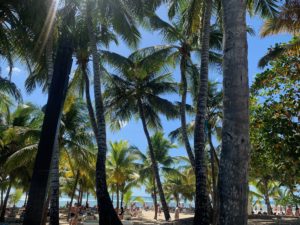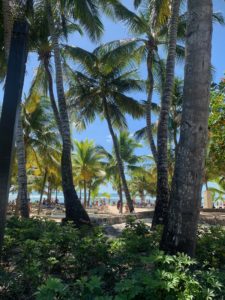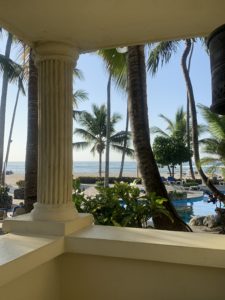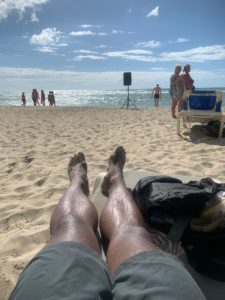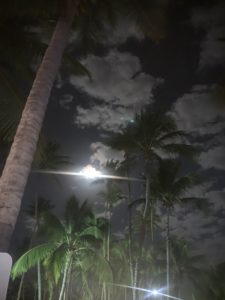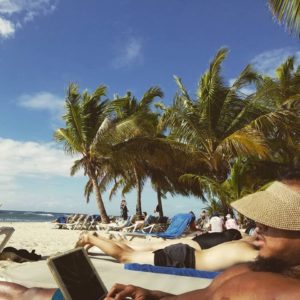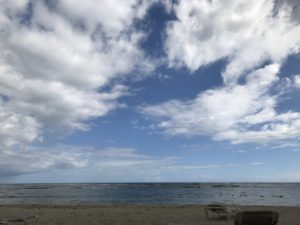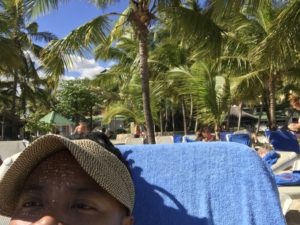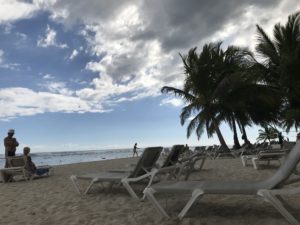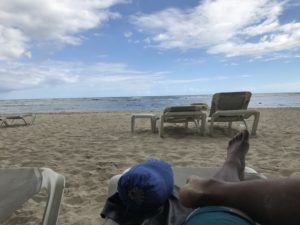“What Does it Mean to Look at This” by Teju Cole
“Black Looks, Race and Representation: Intro & Chapter 7: Oppositional Gaze” by bell hooks
It was interesting to read both texts before heading to an a resort in Santo Domingo, Dominican Republic this past Sunday to Thursday. I expected my vacation to be relaxing (partially was) and carefree, but it ended up being mentally, emotionally, psychologically and spiritually exhausting being on a resort with 95% (white people- mainly from Europe) that were unkind, rude, and disrespectful to the workers/native dominicans of color at the resort. There were so many moments, where I wished I had taken candid photographs of the way the White people were treating the natives of color. Due to how natural these negative racialized experiences were, I was unable to pull out my phone camera in time so I mentally took snapshots of facial expressions, the way the workers held their head down when being yelled at (for no reason- literally for entitlement like not having a balcony seat to eat, the ice was melting in their cups, their fork fell on the floor and wasn’t picked up fast enough, etc) and the countless times workers sighed, took a deep breath, and put on a “smile” before walking to a table of rude and entitled people, who many times mocked their accent and laughed because the workers couldn’t speak english, “properly” or “understand” what they were asking.
“Taking photographs is sometimes a terrible thing to do, but often, not taking the necessary photo, not bearing witness or not being allowed to do so, can be worse,” (Cole, 2018). This quote has sat with me throughout my vacation and I am still pondering over it. I failed at sharing what I witnessed. It left me to think and reflect on this quote: “What have we done,’ they ask us, ‘to create the conditions in which others, our fellow citizenship, undergo these unspeakable experiences?’” (Cole, 2018). I am so angry to have witnessed the ways in which White Domination still exists, and manifests itself so oppressively in other countries of color. This leads me to my reflection on bell hooks’ reading.
“It is only as we collectively change the way we look at ourselves and the world that we can change how we are seen. In this process, we seek to create a world where everyone can look at blackness and black people, with new eyes,” (hooks, 1992) .
How can I enhance my freedom dreams project to join this process in which people will see our Black and Brown children with new eyes, eyes of love, care, beauty, and humanity?
“What can the future hold if our present entertainment is the spectacle of contemporary colonization, dehumanization, and disempowerment where the image serves as a murder weapon,” (hooks, 1992).
How do we disassemble this “murder weapon”, a weapon that literally and figuratively contributes to the school to prison pipeline for our black and brown boys of color?
“Cultural identity…is a matter of ‘becoming’ as well as ‘being.’ It belongs to the future as much as to the past. It is not something which already exists, transcending place, time, history, and culture. Cultural identities come from somewhere, have histories. But, like everything which is historial, they undergo constant transformation. Far from being eternally fixed in some essentialized past, they are subject ot the continuous ‘play’ of history, culture and power. Far from being grounded in a mere ‘recovery’ of the past, which is waiting to be found, and which, when found, will secure our sense of ourselves into eternity, identities are the names we give to the different ways we are positioned by, and position ourselves within, the narratives of the past,” (quoted by hooks, 1992, from “Cultural Identity and Diaspora” by Stuart Hall).
Do/Can freedom dreams convey parts of our cultural identities? Our history of struggles? Are elementary school children too young to have identities that are names to give to the different ways they are positioned by, and positioned themselves within? How can we visually capture these different ways identities are positioned by and within?
Attached are some random photographs I took at DR:
